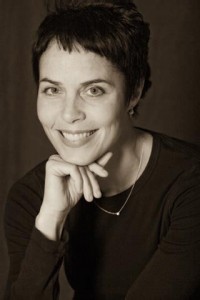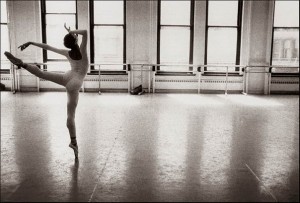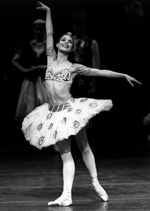In Part II of our series, we are following up on the interview with Risa Kaplowitz and talking today with Susan Jaffe, who was recently named Ballet Mistress for American Ballet Theatre…
I also have to point out this wonderful interview Susan did with Charlie Rose in 2002. Don’t miss it.
1. What is your teaching philosophy and who has it been influenced by?
This is a question one can write entire book on, but below is snap shot of my philosophy. Also, I have had many great teachers in my life including books, artists from other professions, and life’s circumstances (good and bad), but here is a list of people from my professional ballet life that have mostly influenced my teaching: Mikhail Baryshnikov, Irina Kolpakova, Elena Tchernichova, Christina Bernal, Nancy Bielski and Julio Horvath-who created Gyrotonics.

I am very much focused, when teaching a ballet class, on correct placement, correct use of turn out, breadth, coordination of the arms and head and legs, using the oppositional forces within a step, i.e. every force has an equal and opposite force going in the opposite direction within the body. For example, to releve´ the dancer must push down into the floor through the legs to rise up to pointe. Secondly, it is important that the dancer takes all of these skills and transforms them into a movement quality with the understanding of the use of dynamic, musicality, amplitude, and of course, the heart, which is the source that allows a dancer freedom and genuine expression.
At the beginning a dancer needs to understand how to stand up correctly. This includes not only the proper placement of the torso, arms, feet, head and legs, the correct use of turn out, and the correct coordination, but also where to direct ones energy and focus while executing a step. This is a very sophisticated understanding of the body and requires much will and focus to acquire. Then as the dancer progresses, those same ideas apply when s/he is moving through space, which requires added strength, skill and application of those same principals.
I try to teach all of this within the appropriate stages and levels of maturity of a young dancer’s training. Each level can be taken to higher levels of understanding and sophistication that equals their abilities. I also try to be as honest, but as positive and reassuring as I can. It is important for a dancer to know what they need to work on, but it is equally important how a dancer approaches their work and how they feel about themselves while they work. If they are implementing their corrections with the joy and curiosity of learning, then they will improve much faster than if they go into habits of self-flagellation. My quest is to empower the dancer with their-own confidence, curiosity, self- exploration and passion to learn and improve.
2. What is your best advice for a dancer who wants to become a professional?
To become educated about your art whether it is in or out of class. It is important to know dance history, see the greats (past and present) in the profession in videos or movies, go to museums, listen to great music, and read literature. It is also important to get to know yourself on a deep level and understand what is beautiful and horrible about humanity. Never stop trying to learn as much as you can about you, and it. Then you will have the possibility to become a professional that can transform pure movement into genuine inspiration. You should not aim to be a technical machine; a true dancer is guided by their heart and soul to speak a language that is deep, informed, and inspired. That is where the real art of ballet lies. Aim for that.

3. How has your dance career informed and impacted your teaching?
Everything that I have done in my life has impacted my teaching. It takes many, many years to understand this art form and what makes it come alive. But, while I was dancing I reinvented my approach to technique several times throughout my career. That has informed me a great deal about how long it takes to change a habit or to implement a new idea. It takes tremendous patience and perseverance and I am able to support a dancer through a change because I lived it myself.
4. What was it like to leave the stage and start teaching in the classroom?
When I left the stage, I was ready to go, so teaching was a nice way to give back to the art form that I have loved all my life. That is the way dance continues on, and it seemed like the most natural thing to do for me.
5. What will you miss about teaching at Princeton Dance & Theater Studio and what are you looking forward to in your new role as ballet mistress at ABT?
The thing I will miss most from my school is my students and the lovely families that came together as a result of opening the school.
What I am looking forward to in working at ABT is being able to share what I have learned on a more sophisticated level (now we are getting into roles and dramaturgy. Yeah!) to the dancers that are going out there and performing those roles. I already started working with them last spring and it has been a real joy. I look forward to more of it.

BIO: Declared by the New York Times as “America’s Quintessential American Ballerina” Susan Jaffe danced as a principal dancer with American Ballet Theatre for 20 years. Prominent in the international dance scene as well, her European engagements included performances with The Royal Ballet, The Kirov Ballet, The Stuttgart Ballet, The Munich State Opera Ballet, La Scala Ballet in Milan, The Vienna State Opera Ballet, The Royal Danish Ballet, The Royal Swedish Ballet, and The English National Ballet.
Ms. Jaffe’s versatility as a dancer allowed her to tackle a large range of choreographic works. This not only included her acclaimed interpretations of the classics like Swan Lake but also the dramatic works of John Cranko, Anthony Tudor, Agnes DeMille and Kenneth MacMillian. She also worked with and danced the works of many prominent choreographers such as Jiri Kylian, Twyla Tharp, George Balanchine, Jerome Robbins, Lar Lubovitch, Nacho Duato and Roland, Petit, David Parsons, Mark Morris, Merce Cunningham, Ronald Hynd, Frederick Ashton, Ulysses Dove and Lynn Taylor Corbett.
In 2003, one year after her retirement from the stage, Ms. Jaffe co-founded the Princeton Dance & Theatre Studio in Princeton, New Jersey where she enjoys passing on the wealth of her knowledge to her dance students. Along with teaching for American Ballet Theatre and giving corporate lectures for Duke Corporate Education, Ms. Jaffe has expanded into choreography. Her choreographic achievements to date include “The Nutcracker” “Pop Sonata” “Velez Pas de Deux” “Sleeping Beauty Act lll” “Raymonda Divertessments” “Novem Pas de Deux” “Ballet Studies”, “Tarantella”, “Royenne”, “UnCaged” and the “Cancan.” She also wrote a children’s book, “Becoming a Ballerina” for children ages 7-13.
Ms. Jaffe has recently been named Ballet Mistress at American Ballet Theatre; a position she will fulfill in October of 2010.





